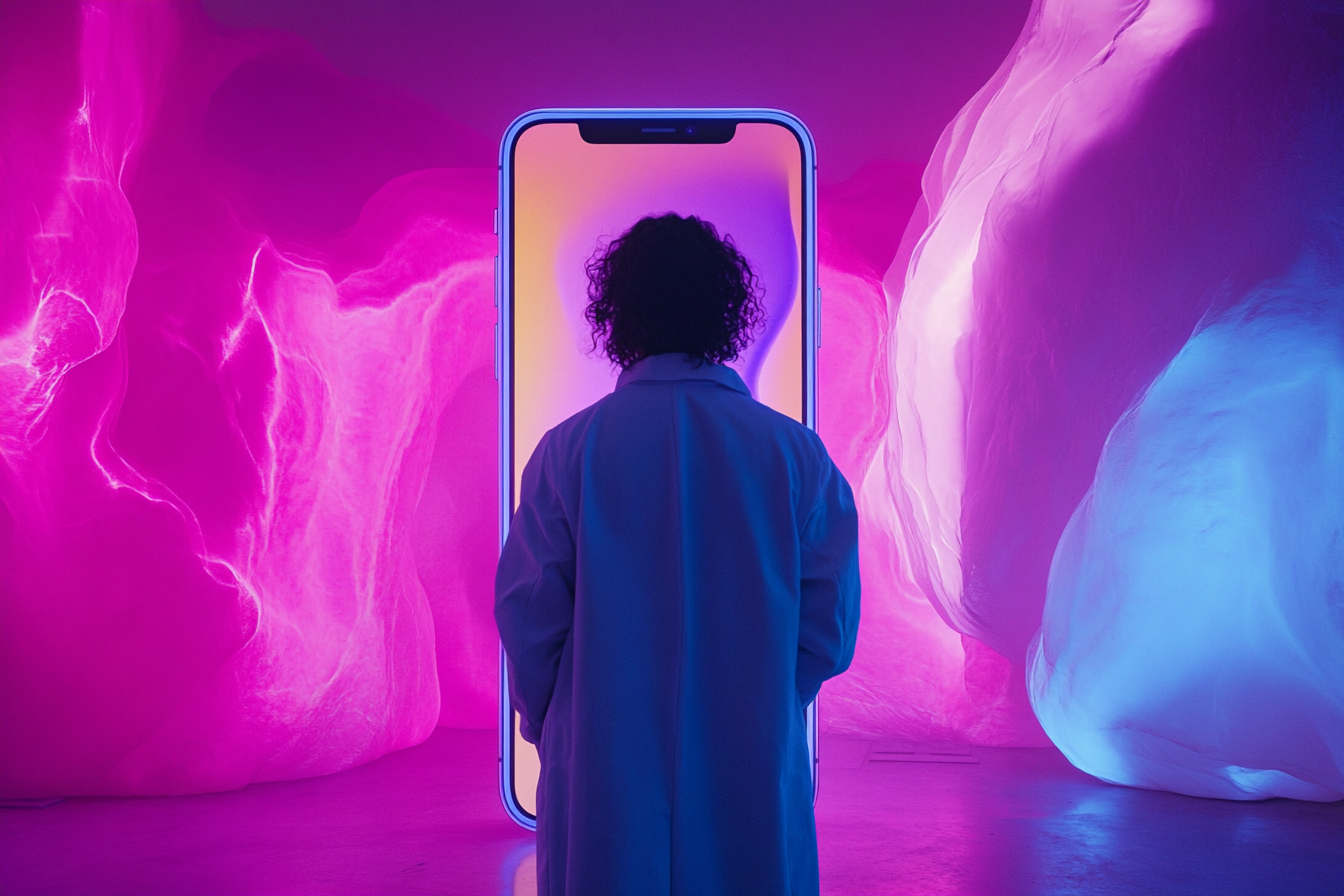Editor’s Note: This is the third of a five-part series that explores the idea of viscerality, one of the most powerful mechanisms by which your marketing content and program can become memorable. It follows an introductory article that you can read here that explains why viscerality is valuable to your practice. In that article, we outlined the 5 Tenets of Viscerality: Emotional Resonance, Authentic Portrayal, Sensory Engagement, Immersion, and Compelling Stakes. In this series, we venture more deeply into each concept and learn how to achieve each individual tenet.
Your move, chief.
There are a handful of stories that transcend typical themes and narratives and become a cornerstone of what truly great storytelling can be — only a few stories that break themselves apart from everything else that has been done and showcase a truly incredible and moving experience.
I consider Good Will Hunting to be near the top of that list. You could use this film to teach masterclasses on so many different aspects of storytelling, but it has always been the movie’s ability to achieve such powerful viscerality that has set it apart from me.
That experience was by design; one of the major themes of this film is that empirical experience (having used your own senses to observe something) is much more valuable than theory, memorization, or simply fact-based knowledge.
It would be no exaggeration to say that, in developing the 5 Tenets of Viscerality, the monologue delivered by Robin Williams in Good Will Hunting did a lot of heavy lifting in helping to understand that this level of sensory engagement is a critical part of achieving viscerality.
So, as a result, sensory engagement, or the ability to trick the minds of your audience into forgetting where they are and becoming engrossed in your marketing and content, becomes one of the best tools you can access when it comes to achieving viscerality.
Sensory Engagement Tells a Better Story
“So if I asked you about art, you’d probably give me the on about every art book ever written. Michelangelo. You know a lot about him. Life’s work. Political aspirations. Him and the Pope. Sexual orientation. The whole works, right? But I bet you can’t tell me what it smells like in the Sistine Chapel. You’ve never actually stood there and looked up at that beautiful ceiling. Seen that.”
In this monologue, and in this particular passage particularly, Williams’ character evokes powerful sensory engagement. Sure, you might’ve seen a picture of the chapel, and read about the history, but have you ever looked up at it in awe? Do you know what it smells like? How the room is filled with people, yet so quiet that you can hear the sounds of echoing footsteps? How there are other walls filled with just as breathtaking art?
I might’ve added a few details of my own there, but, the point is, Williams builds a scene by engaging the senses. Sight and smell are the main two, but hearing is just as easy to add in for anyone who has ever been to the Sistine Chapel as well.
This is what viscerality is all about — transporting your audience somewhere other than where they are. You might not be able to talk about the Sistine Chapel or waking up to a loved one in your marketing, but there are powerful motifs you can talk about.
Let’s say do an exercise on sensory engagement. To begin, let’s pick a situation and scene. Let’s pretend for a moment that your medical practice performs a lot of body contouring procedures. What’s a scene that could be important to your targeted audience? The beach is an easy one.
What would they sense?
- Sight: waves, sun, sunset, sand, boats
- Smell: sunscreen, barbeque, ocean water
- Hearing: waves crashing, people laughing and yelling, music playing
- Touch: sea breeze, sand, cold water, that feeling you get when salt water air dries
- Taste: salt water, refreshments, fruit, snacks
So, with this, let’s build some kind of scene we can use for marketing material. Let’s keep it simple, not too fancy. All we are trying to do is build an idea here:
You lay on the beach and close your eyes. The sun is so bright that you can see it despite your eyes being closed. You can smell ocean water and barbeque in the air, and hear the waves crashing down as a family next to you plays in the sand. You settle in the sand and bring a fresh piece of watermelon to your lips. It’s sweet, but there is some leftover ocean water on your hands that makes you taste salt.
This isn’t poetic yet, but we will get there. The next thing to consider is how you make this kind of experience relevant to your audience. What are their concerns and motivations? If you don’t know, you need to figure it out as quickly as possible. (Read our guide on Patient Personas to learn more.)
Here’s a common and low-hanging fruit: many of your potential patients say they just want to feel comfortable in their skin and rid themselves of self-consciousness.
So, let’s marry these two ideas and get a little more elegant in our writing:
For the first time in years, you find yourself lying on the beach in that yellow bikini you’ve always wanted. You forgot that the sun could be so bright that it shines through closed eyes and sunglasses as you feel its warmth on your skin. You remember the smell of ocean water and sunscreen… it’s nostalgic. You listen to the waves crashing for a moment before hearing a little girl giggling loudly with her family as they cover her with sand. The little girl feels… familiar, not a care in the world. As you smile at the sounds, you bring a piece of cold watermelon to your lips; it’s sweet, but you have a little ocean water left on your hands, so for a moment, salt overwhelms your palette in the best way possible. It’s been a long time since you had a moment like this. The best part? You also feel great in your skin, no overwhelming feelings of insecurity, and you wonder why you didn’t do this way sooner.
This paragraph builds a scene in the mind of your potential patients. It engages their senses and forces them to pay attention to what you are saying while tying it to personal motivation. This practice alone could be the difference between a patient deciding they want to have this kind of moment instead of deciding that seeking out treatment isn’t worth the trouble. It could single-handedly be the difference in how many patient signups you get.
You’ve communicated to this patient that you get it. You understand it’s not just about the clinical aspect, it’s about their quality of life. Their journey. When they read this, they are going to forget all about the dozen other cookie-cutter websites or social media profiles they’ve visited because you were the first to put them in a scene that they wanted to be.
Sensory Language Improves Comprehension and Memory
A foundational principle in writing is that there is a direct correlation between descriptive language and a reader’s comprehension and memory. This means that, as you use sensory language in your marketing material, you are increasing the level of description and building detail. This will naturally lead to improved comprehension in your reader.
Now, there is a spectrum that exists: if you write as densely as George R.R. Martin, less sophisticated and practiced readers will have a hard time keeping up, but if you write as simply as a children’s book, there won’t be much to remember anyway.
You have to find the right balance for your audience. How educated are they on average? How prone to sophisticated storytelling are they? These are important questions to have answered because comprehension and memory are important components of more than just marketing content.
For most audiences, you’ll want to aim for an eighth-grade reading level, but you can step it up a bit if you feel your audience will have an easy time digesting it.
Brand Identity and Equity
Your brand identity is how you or your practice is perceived by the general public. What are your core values? Do you have a mission statement? Are you professional or comforting? Who are you, and most importantly, are you memorable or forgettable?
Your brand equity is a little different. As you start to build a catalog of marketing content — particularly content that is visceral — then you will build up a certain amount of goodwill with your targeted audience, patients, and potential patients. This goodwill comes into play when they are making a decision between your practice and someone else. Will they choose you over anyone else?
Sensory engagement is also an important component of these factors. The deeper you can create a connection, the stronger your audience's associations with your business will be, and the more deeply they will remember you and prefer you over other options.
It’s no different from why, years and years later, people still turn to Williams’ monologue in Good Will Hunting as one of the best of all time—it stuck with them, impacted them on a deep level, and ensured that the film (or your practice) wouldn’t be forgotten over time.
Sensory Engagement Leads Right Into Immersion
Engaging your audience’s senses to trick them into believing they are with you and your practice at that moment is definitely a strategy for creating visceral content, but it is also associated with what we know as immersion. In Part 4 of this series, we explore the concept of immersion and how you can use it to create visceral content for your practice.
Too Long? Here's the Short Version
TL;DR: Sensory engagement enhances marketing by creating vivid, memorable experiences that connect deeply with your audience. By appealing to sight, smell, touch, taste, and sound, you transport potential patients into relatable, emotional scenes that resonate with their aspirations. This technique improves comprehension, memory, and brand identity, helping you stand out in a crowded market and build lasting relationships. Crafting immersive sensory narratives can make your practice unforgettable.
TL;DR: Sensory engagement enhances marketing by creating vivid, memorable experiences that connect deeply with your audience. By appealing to sight, smell, touch, taste, and sound, you transport potential patients into relatable, emotional scenes that resonate with their aspirations. This technique improves comprehension, memory, and brand identity, helping you stand out in a crowded market and build lasting relationships. Crafting immersive sensory narratives can make your practice unforgettable.










